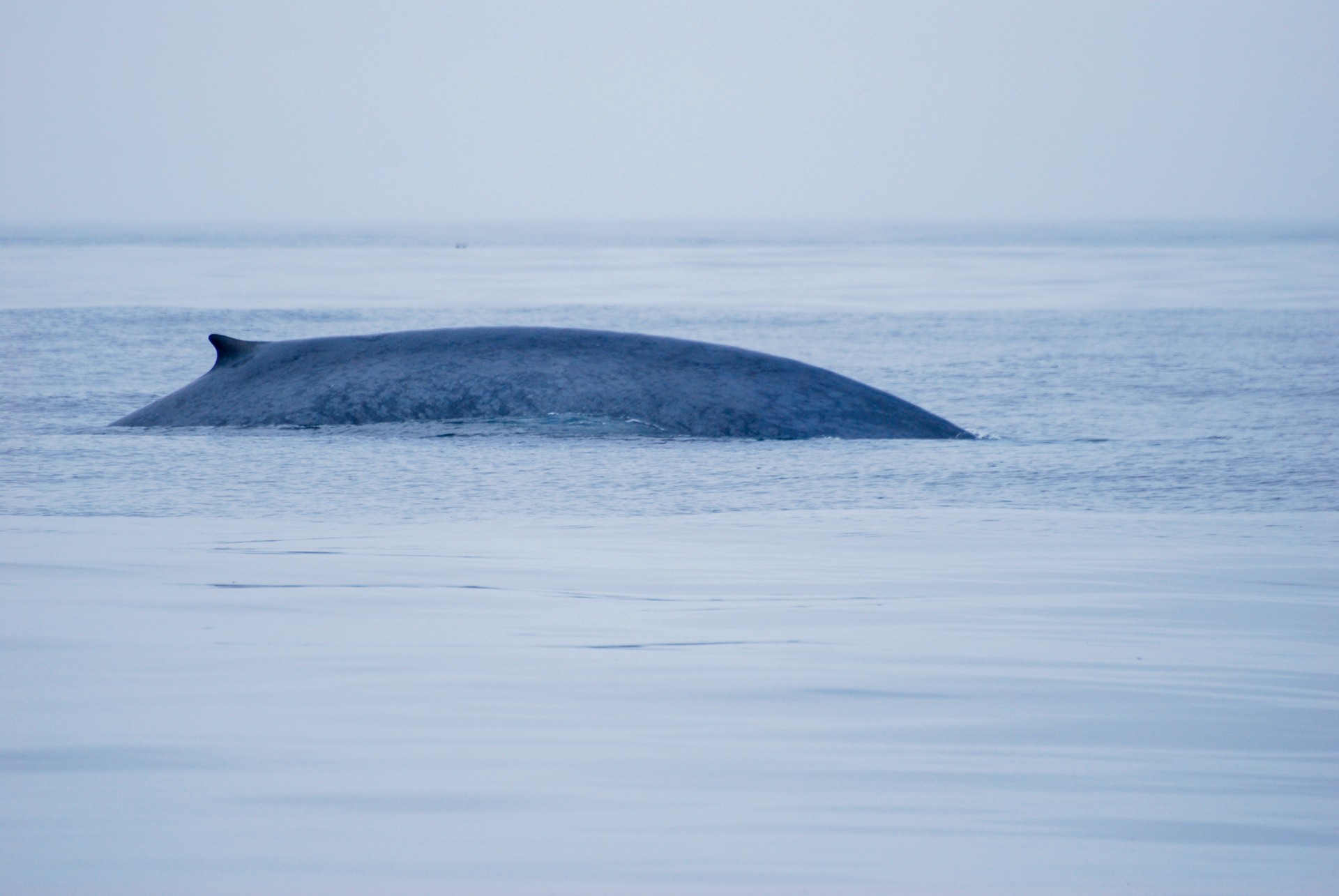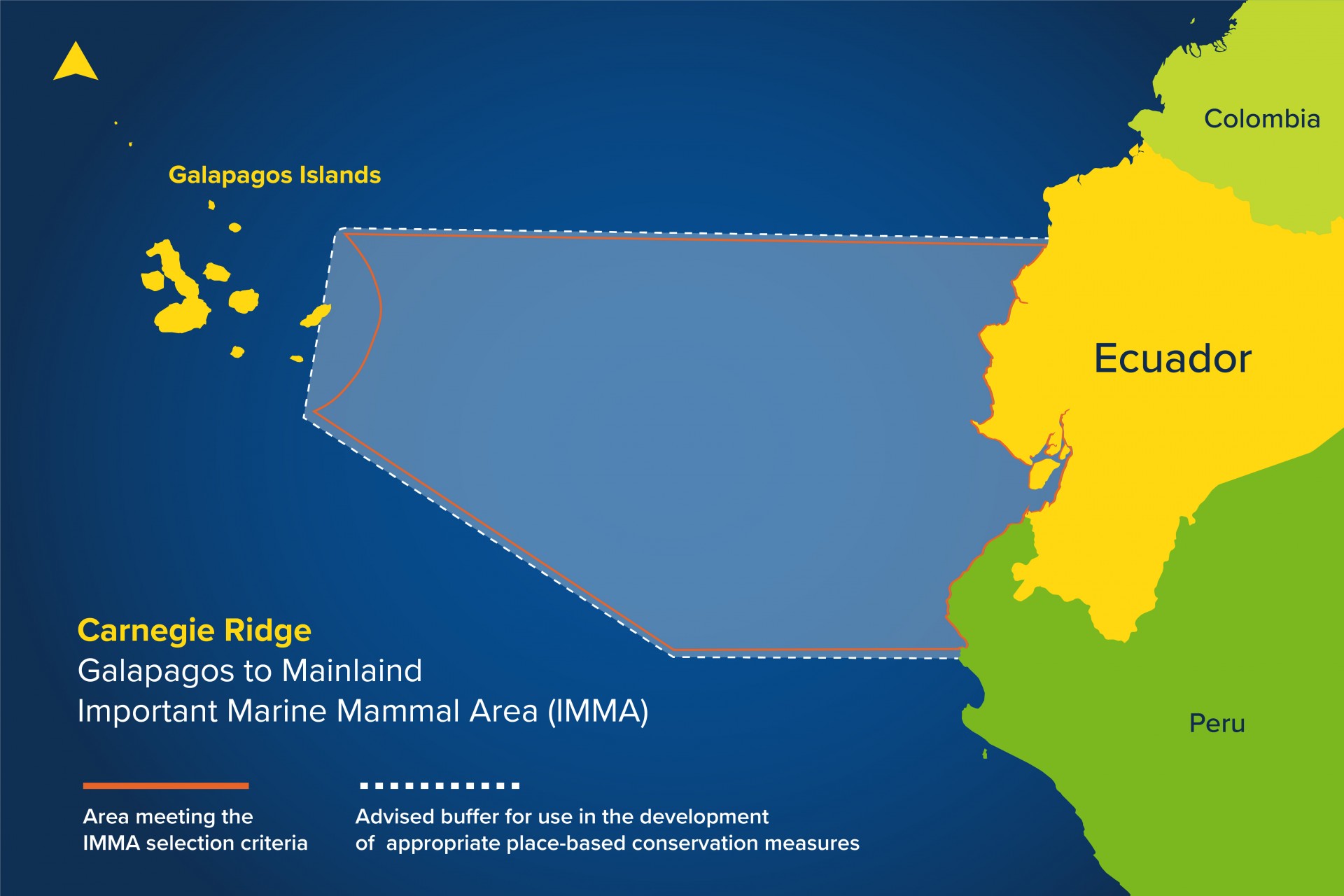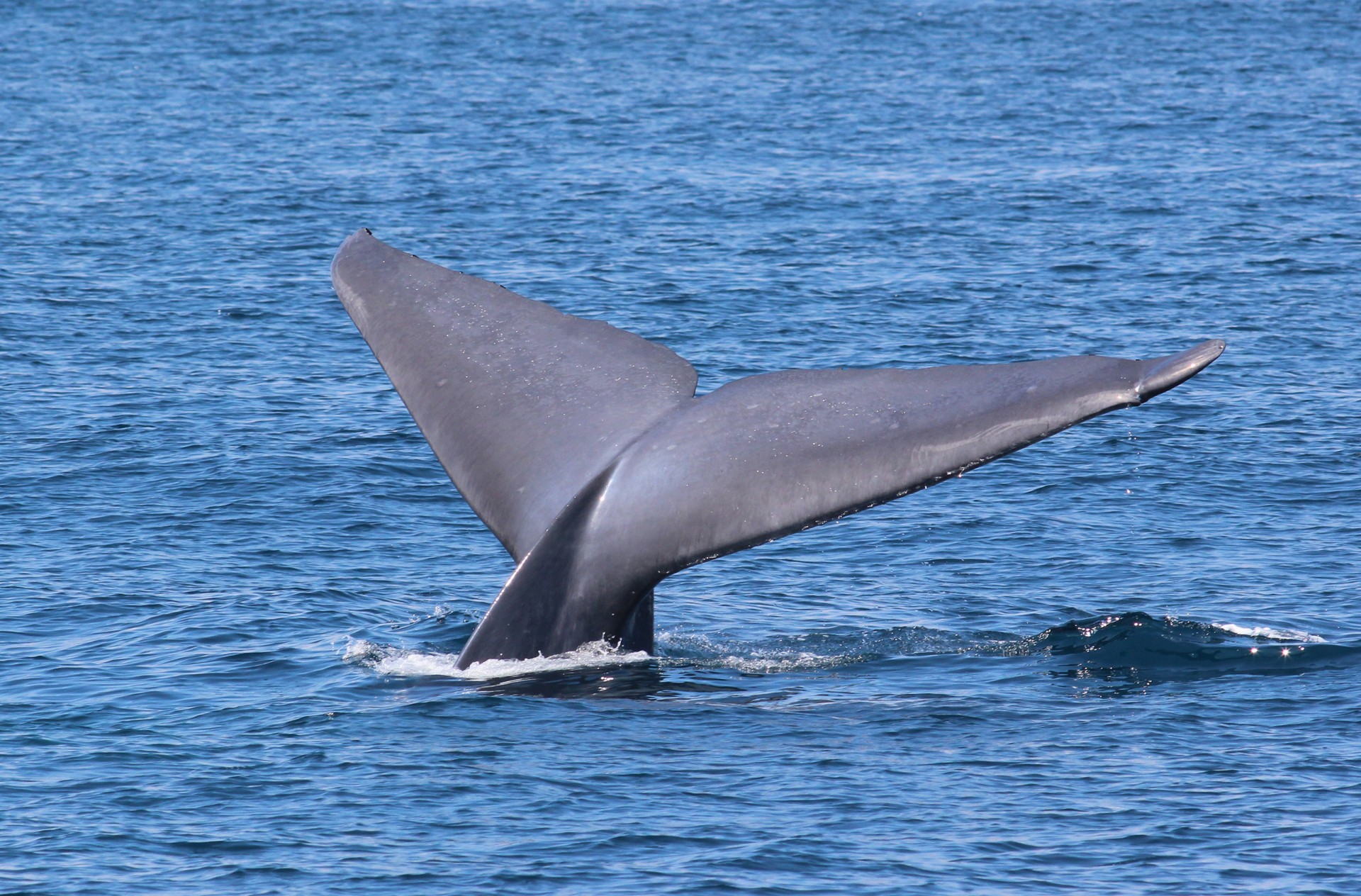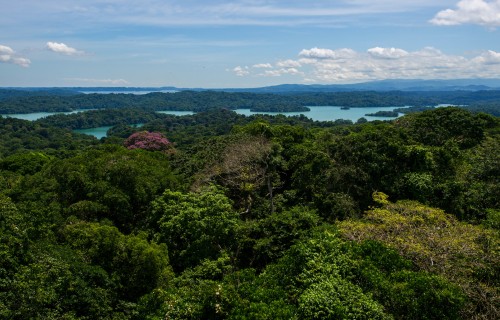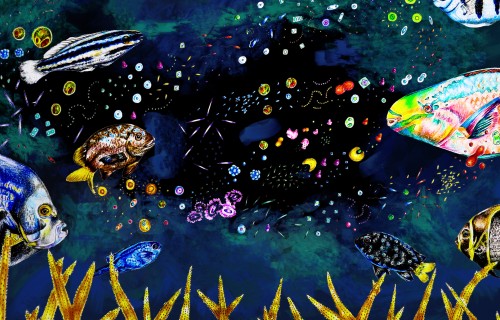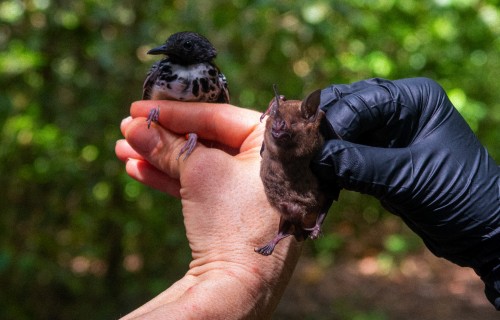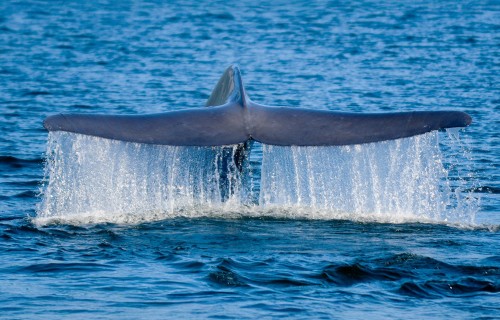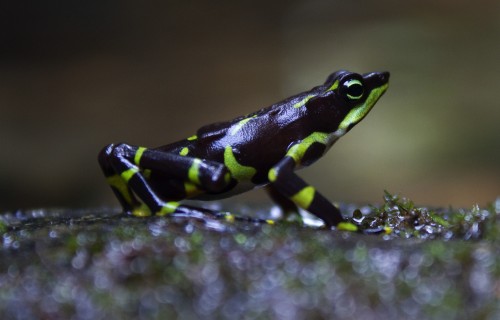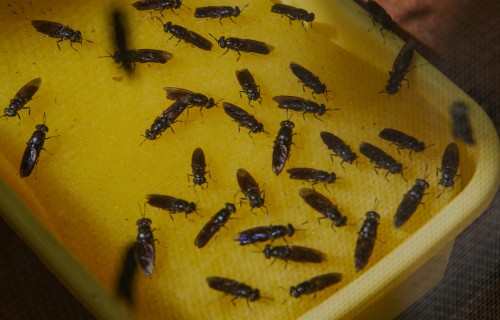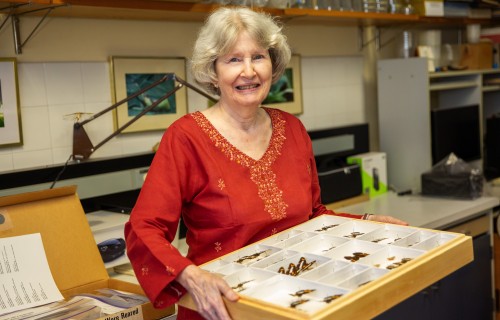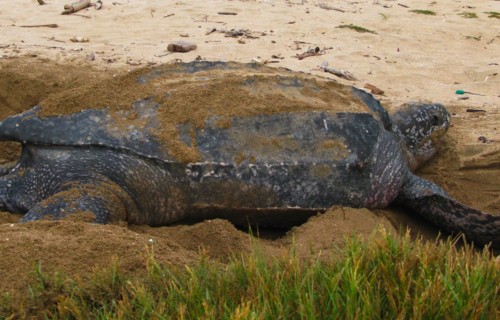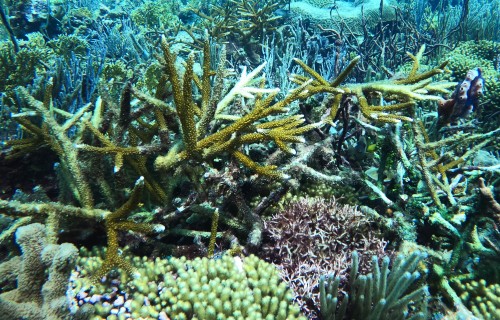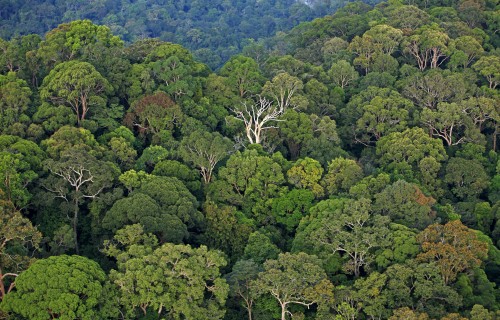Above the tropical forest canopy,
sensors capture the fluxes of gases
between the trees and the atmosphere
New Marine
Mammal Area
Smithsonian Science Drives Establishment of New Important Marine Mammal Area in Ecuador
Byline: Beth King
The International Union for the Conservation of Nature (IUCN)’s Marine Mammal Protected Areas Task force invites groups of marine biologists to propose Important Marine Mammal Areas. The new IMMA along the Ecuadorian coast proposed by STRI’s Hector Guzman and colleagues will lead to a cascade of scientific activities designed to protect not only marine mammals, but their entire habitat.
Over 7,000 whales migrate through a shallow stretch of ocean off the coast of Ecuador each year. Scientists like Hector M. Guzman from the Smithsonian Tropical Research Institute (STRI) are celebrating a decision by the Marine Mammal Protected Areas Task Force of the International Union for the Conservation of Nature (IUCN) to accept their proposal to designate the Carnegie Ridge, an area spanning more than 450,000 square kilometers (almost 174,000 square miles) from the Galapagos archipelago to the mainland, as the newest Important Marine Mammal Area (IMMA).
“We are thrilled that the IUCN accepted our proposal to designate the Carnegie Ridge area as an IMMA and we hope it will lead to further protection of marine mammals and their habitat,” said Guzmán, “Whale research is needed to provide the basis for understanding the adaptation to climate change scenarios and improving the connection between Galapagos and the mainland and to identify potential activities threatening their ability to peacefully migrate to feeding and breeding grounds. In other IMMA’s people have worked with the International Maritime Organization to regulate shipping to prevent lethal ship strikes as we did in Panama and Costa Rica, and something we have attempted unsuccessfully for the coasts of Peru and Ecuador. We’re looking forward to providing the science to give these animals hope.”
STRI staff scientist Hector Guzman led and drafted a proposal, now being formalized, to designate the Carnegie Ridge as the newest Important Marine Mammal Area (IMMA). Photo credit: Ana Endara, STRI.
Since 2016 the task force has identified 160 IMMA’s, about a third of the world’s ocean area. IMMA’s are not Marine Protected Areas and have no legal standing, and are defined as “discrete portions of habitat, important to marine mammal species, that have the potential to be delineated and managed for conservation.” But independent groups of experts, free from political and economic pressures, follow clear criteria to propose specific areas of marine mammal habitat as IMMA’s, hoping that national or international conservation initiatives will follow their science via a clear timetable for action.
Participants in the 2014 Shipstrike Conference in Panama first discussed the idea of establishing IMMA’s as a basis for further conservation efforts, which was further developed at a workshop in Greece in 2019. Researchers hope that this process of proposing candidate IMMA’s, backing them up with science and then moving forward to the legal establishment of Marine Protected Areas and international agreements to establish networks of MPA’s, will catapult ocean conservation into a new, more effective, space.
“The Carnegie Ridge IMMA underscores the critical importance of undersea geography in shaping biology in the Eastern Tropical Pacific,” said Joshua Tewksbury, Director of STRI, “The Cocos Ridge, the Carnegie Ridge, the Cordillera de Coiba and even the Bay of Panama are all defined by their undersea geography, and together they form the backbone of the Marine Corridor of the Tropical Eastern Pacific. There are few places in the world where biological connectivity, biodiversity, and political will come together to drive conservation more effectively than in this region.”
Blue whales (Balaenoptera musculus) reach almost 30 meters/100 feet long and live for 80-90 years. Scientists can tell where the whales are from because they sing different songs. Photo credit: David Slater, licensed under Creative Commons Attribution 2.0 Generic (CC BY 2.0)
Carnegie Ridge, an area spanning more than 450,000 square kilometers (almost 174,000 square miles) from the Galapagos archipelago to the mainland, as the newest Important Marine Mammal Area (IMMA).
Marine mammals depend on both shallow and deep habitat along the Carnegie Ridge—an area of thickened oceanic crust extending from the Galapagos hot spot to somewhere under the continent of South America—as a steppingstone as they migrate thousands of miles.
The new Carnegie Ridge IMMA met the criteria: as sensitive habitat for migration and breeding of endangered blue whales and sperm whales and as home to marine mammals: Bryde’s whale, Balaenoptera edeni; common dolphins, Delphinus delphis; humpback whales, Megaptera novaeangliae; the pygmy beaked whale, Mesoplodon peruvianus; orcas, Orcinus orca; false killer whales. The Carnegie Ridge IMMA includes most of the Exclusive Economic Zones of Ecuador and Peru, and international waters between the archipelago and the mainland.
Blue whales reach almost 30 meters/100 feet long and live for 80-90 years. Scientists can tell where blue whales are from because they sing different songs. Blue whale hunting was banned in 1966, but the whales are still endangered, stressed out by noise from oil exploration, pollution, and climate change. They usually migrate between feeding grounds near the poles and breeding grounds in the tropics. Orcas may attack blue whales and their calves.
Blues whales are still endangered, stressed out by noise from oil exploration, pollution, and climate change. They usually migrate between feeding grounds near the poles and breeding grounds in the tropics. Photo credit: Tom Benson, licensed under Creative Commons Attribution-NonCommercial-NoDerivs 2.0 Generic (CC BY-NC-ND 2.0).
Sperm whales, the largest toothed whales, also migrate along the coast of Ecuador. They live to be 70 years old and have the largest brain—weighing 7.8 kg or 17 pounds—of any animal on Earth. Commercial whaling, as described in the novel Moby Dick, nearly wiped out the sperm whales in search of sperm oil for candles and lubricants, and ambergris, an ingredient in perfumes. Sperm oil-filled chambers in the whales’ heads play a mysterious role, probably amplifying clicking noises for both echolocation and communication.
Humpback whales, which also traverse the new IMMA, may migrate 8000 kilometers between feeding and breeding grounds in the southeast Pacific.
Resources
https://www.marinemammalhabitat.org/portfolio-item/carnegie-ridge-galapagos-to-mainland-imma/
Image licenses


